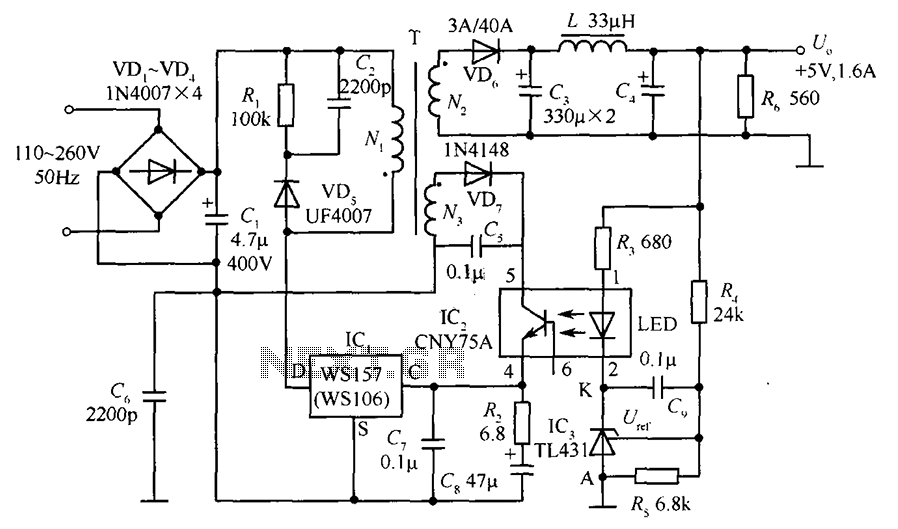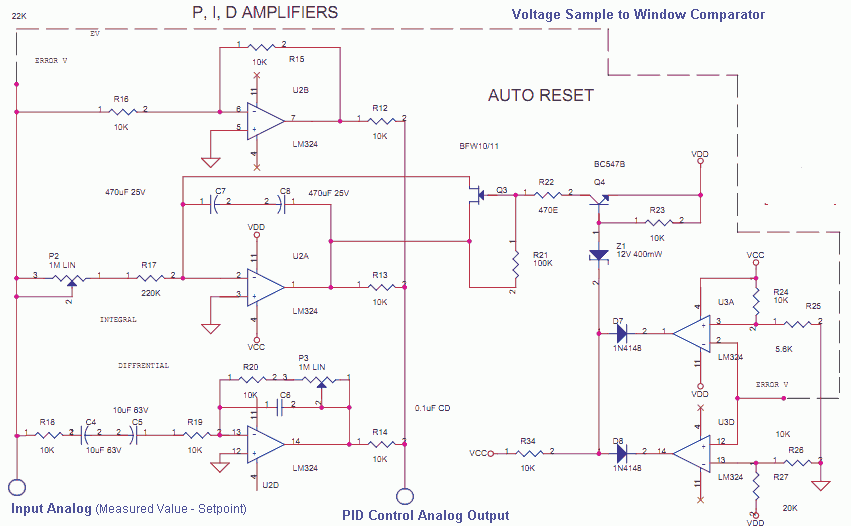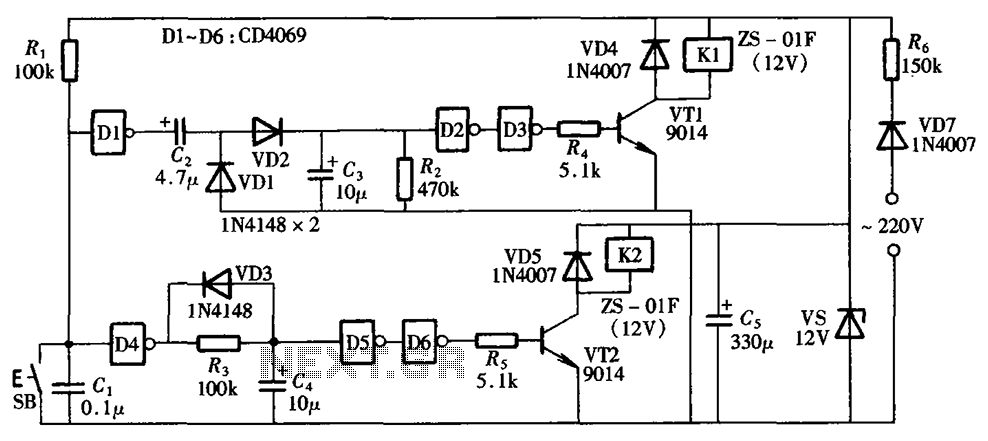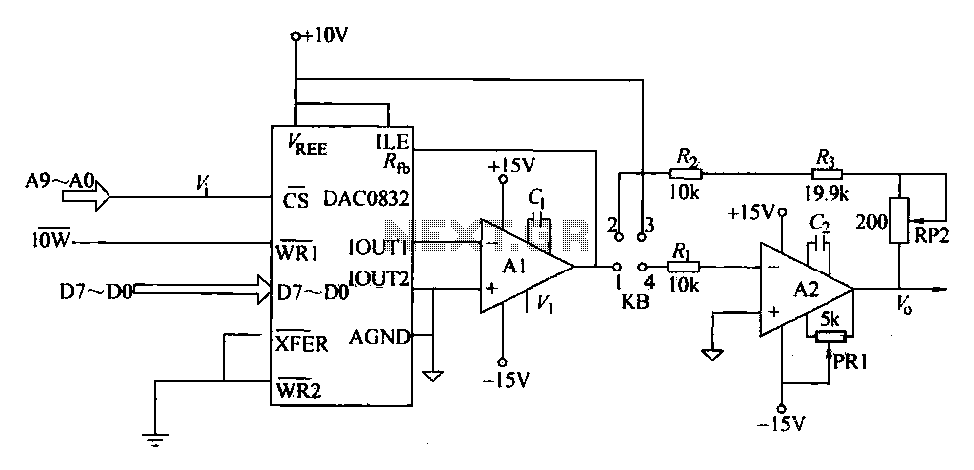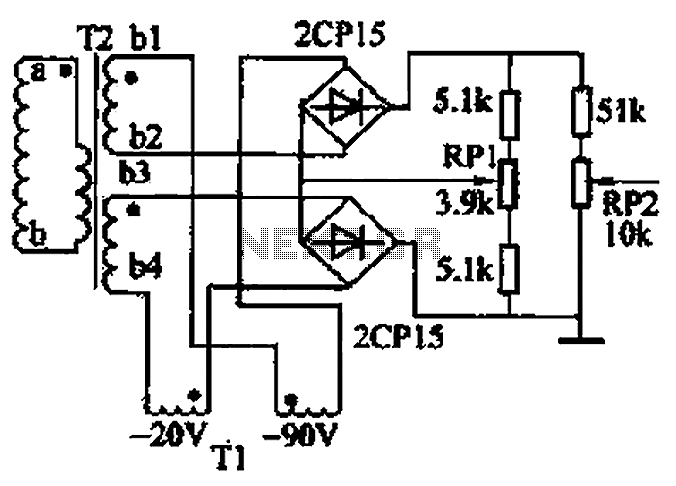
Analog multiplexer CD4051 extension circuit 1
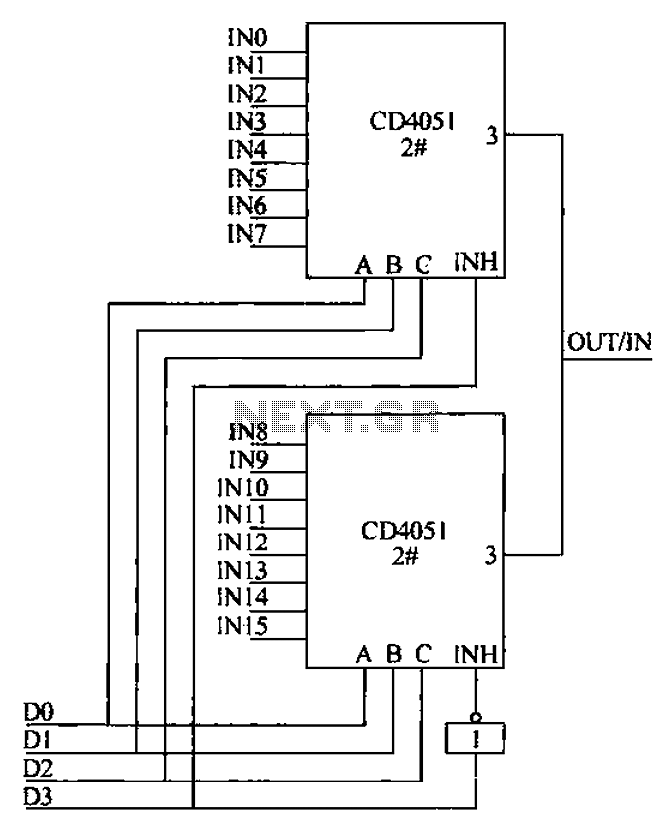
The CD4051 is a single-ended input 8-channel multiplexer that features three channel select inputs (A, B, C) and an inhibit input (INH). The signals at inputs A, B, and C are utilized to control the selection of one of the eight channels. In practical applications, if more than eight parameters need to be measured, multiple CD4051 multiplexers can be connected in series to meet the requirements. For instance, two CD4051 multiplexers can be combined to create a 16-channel multiplexer configuration. In this setup, when one multiplexer chip is activated, the other chip remains inactive. The control system can utilize a single address or data line to manage the selection signals for both chips, allowing for the selection of channels IN0 to IN15 by adjusting the states of the channel select lines D3 to D0. Specifically, D3 is used to control the first chip while also influencing the inhibit input of the second chip. When D3 is set to 0, the first chip is active, and only channels IN0 to IN7 are available. Conversely, when D3 is set to 1, the second chip is selected, and the states of D2 to D0 will determine which of the channels IN8 to IN15 are activated.
The CD4051 multiplexer is designed to facilitate the routing of multiple signals to a single output, making it highly useful in applications where signal management is critical. The device operates by allowing one of eight input signals to be selected and passed to the output based on the binary values present at the select inputs A, B, and C. The inhibit input (INH) provides additional control, allowing for the disabling of the selected channel when necessary.
In a multi-chip configuration, the proper management of the control signals is essential to ensure that only one multiplexer is active at any given time, thus preventing signal interference. This is achieved by using a combination of logic gates, such as inverters, to manage the enable states of each multiplexer. The design allows for scalability, enabling the user to expand the number of channels by simply adding more CD4051 devices and correctly configuring the address lines.
The integration of multiple CD4051 devices in a single system can be particularly advantageous in complex measurement and control applications, such as data acquisition systems, automated testing setups, and communication systems, where a large number of signals need to be multiplexed efficiently. The careful arrangement of the select lines and the inhibit input ensures that the system remains responsive and reliable, providing a robust solution for channel selection in electronic circuits. CD4051 is a single-ended input 8-channel multiplexer, it comes with three-pass channel select inputs A, B, C, and an inhibit input INH, input terminals A, B, C signal is used t o control the selection of eight channels It is turned on. In practice, if more than 8 measured parameters, using ten CD4051 multiplexer does not meet the requirements of large ones, which can be more than CD4051 connected and extended. Fig. 27-6 is composed of two CD4051 16 -channel multiplexer connection diagram. When multi-chip l switch-on work, multiplexer chip 2 on all off; on the contrary, the chip multiplex 2 opening when switched off, then the multi-switch chip 1 on all disconnected.
So, as long as a address (or data) line as the chip 1 and the chip 2 to allow control system side selection signal, and the two chip select input channels share a group address (or data) line. By changing the channel select lines D3 ~ DO status can gating one of the 16 channels INO ~ IN15. D3 is used to control the chip 1 and the core chip level INH input terminal 2. When D3-0 at which the chip l is fed in, in this context, DZ-DO terminal status is changed, only the strobe INO ~ IN7 one.
When D3-1 time, via the inverter goes low, the chip 2 is selected, this time, D2--; DO these three state lines, make the corresponding channel IN8-IN15 being turned on.
The CD4051 multiplexer is designed to facilitate the routing of multiple signals to a single output, making it highly useful in applications where signal management is critical. The device operates by allowing one of eight input signals to be selected and passed to the output based on the binary values present at the select inputs A, B, and C. The inhibit input (INH) provides additional control, allowing for the disabling of the selected channel when necessary.
In a multi-chip configuration, the proper management of the control signals is essential to ensure that only one multiplexer is active at any given time, thus preventing signal interference. This is achieved by using a combination of logic gates, such as inverters, to manage the enable states of each multiplexer. The design allows for scalability, enabling the user to expand the number of channels by simply adding more CD4051 devices and correctly configuring the address lines.
The integration of multiple CD4051 devices in a single system can be particularly advantageous in complex measurement and control applications, such as data acquisition systems, automated testing setups, and communication systems, where a large number of signals need to be multiplexed efficiently. The careful arrangement of the select lines and the inhibit input ensures that the system remains responsive and reliable, providing a robust solution for channel selection in electronic circuits. CD4051 is a single-ended input 8-channel multiplexer, it comes with three-pass channel select inputs A, B, C, and an inhibit input INH, input terminals A, B, C signal is used t o control the selection of eight channels It is turned on. In practice, if more than 8 measured parameters, using ten CD4051 multiplexer does not meet the requirements of large ones, which can be more than CD4051 connected and extended. Fig. 27-6 is composed of two CD4051 16 -channel multiplexer connection diagram. When multi-chip l switch-on work, multiplexer chip 2 on all off; on the contrary, the chip multiplex 2 opening when switched off, then the multi-switch chip 1 on all disconnected.
So, as long as a address (or data) line as the chip 1 and the chip 2 to allow control system side selection signal, and the two chip select input channels share a group address (or data) line. By changing the channel select lines D3 ~ DO status can gating one of the 16 channels INO ~ IN15. D3 is used to control the chip 1 and the core chip level INH input terminal 2. When D3-0 at which the chip l is fed in, in this context, DZ-DO terminal status is changed, only the strobe INO ~ IN7 one.
When D3-1 time, via the inverter goes low, the chip 2 is selected, this time, D2--; DO these three state lines, make the corresponding channel IN8-IN15 being turned on.
